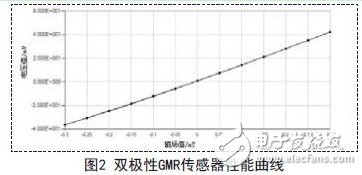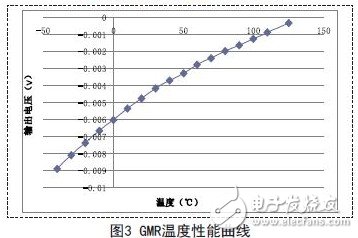1 Overview Magnetic field measurement has a wide range of applications in the industrial field. Among the measurement of magnetic field pulse quantity, switching quantity and linear quantity, Hall sensor is the most widely used, due to its low variety of products and low cost. Hall sensors have a high position in the field of magnetic field measurement. With the successful development of giant magnetoresistance (GMR) sensors, its superior performance has attracted more and more attention, making GMR sensors occupy a place in the field of traditional magnetic field measurement. In the field of magnetic field measurement, the measurement of linear quantity has relatively high requirements on the performance of magnetic sensors. A series of performance indicators such as the measurement range, response frequency, sensitivity and temperature adaptability of the magnetic sensor have a great influence on the measurement of the magnetic field. Compared with other magnetic sensors, GMR sensors have a wide range of magnetic field measurement, high response frequency and sensitivity, and strong temperature adaptability. They have obvious advantages in the field of linear measurement of magnetic field. This article will take the VA series giant magnetoresistance magnetic sensor produced by Dongfang Micromagnetic Co., Ltd. as an example to introduce its characteristics, testing and related applications. 2. Structure of the GMR sensor 2.1 Sensor structure The VA series giant magnetoresistance magnetic sensor uses a Wheatstone bridge structure, as shown in Figure 1. In the figure, R1 and R3 are two resistors with the same resistance value, which can output a differential voltage signal according to the change of external magnetic field. R2 and R4 do not sense the change of external magnetic field due to the action of the shielding layer. The shaded parts on R2 and R4 in Figure 1 are the alloy shield of the sensor. It has two functions: one is to shield the external magnetic field from the effects of the resistors R2 and R4, so that it cannot sense the change of the field to be measured; A flux concentrator gathers the field to be measured around R1 and R3 to increase the amplitude of the sensor output and improve the sensitivity of the sensor. 3. Performance test and application test of GMR sensor 3.1 GMR sensor output performance test The GMR sensor used for linear magnetic field measurement should have good linearity and can measure the magnetic field in both forward and reverse directions. Therefore, the bipolar GMR sensor can be directly tested or selected for unipolar selection on the test chip. The GMR sensor biases it and raises it to zero. Figure 2 shows the GMR sensor output curve of the GMR sensor from negative to positive and back to the starting point. The linear characteristics of the GMR sensor are reflected. It can be seen that the GMR sensor has better linear performance, small hysteresis, and positive and negative coincidence. Preferably, the GMR sensor chip of this model has good static performance. 3.2 GMR sensor temperature drift performance Put the GMR chip into the high and low temperature non-magnetic temperature box, record the data every 10 °C, monitor the drift of the sensor from -40 °C to +125 °C with temperature, as shown in Figure 3, the chip is in the whole temperature range. The internal output changes 9.075mv and the temperature coefficient is 0.055mV/°C. It can be seen that the temperature performance of the GMR sensor chip is superior.
The AGM is a newer type sealed lead-acid that uses absorbed glass mats between the plates. It is sealed, maintenance-free and the plates are rigidly mounted to withstand extensive shock and vibration. Nearly all AGM batteries are recombinant, meaning they can recombine 99% of the oxygen and hydrogen. There is almost no water is loss.
The charging voltages are the same as for other lead-acid batteries. Even under severe overcharge conditions, hydrogen emission is below the 4% specified for aircraft and enclosed spaces. The low self-discharge of 1-3% per month allows long storage before recharging. The AGM costs twice that of the flooded version of the same capacity. Because of durability, German high performance cars use AGM batteries in favor of the flooded type.
Advantages
· Inexpensive and simple to manufacture.
· Mature, reliable and well-understood technology - when used correctly, lead-acid is durable and provides dependable service.
· The self-discharge is among the lowest of rechargeable battery systems.
· Capable of high discharge rates.
Long Life Vrla Batteries,Vrla Battery,High Capacity Battery,12V Electrical Battery Starlight Power Industrial Company Limited , https://www.starlite-power.com


Application of giant magnetoresistive sensor in the field of linear measurement of magnetic field
<p> The giant magnetoresistance sensor is studied. The structure and shielding effect of the giant magnetoresistive sensor are introduced. The current detection is selected as the representative of the giant magneto-resistance sensor in the linear magnetic field measurement. It is analyzed by the test of giant magnetoresistance sensor and current detection. The superior performance of the giant magnetoresistive sensor in the linear measurement of the magnetic field gives some considerations for the giant magnetoresistive sensor in the linear measurement of the magnetic field.